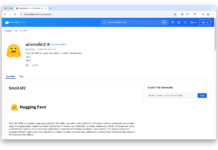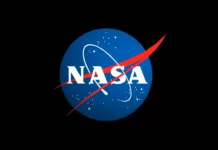Leveraging Docker and Visual Studio Code for a Streamlined Development Experience
Hello to all developers and DevOps enthusiasts! Today, we are diving into a transformative workflow that has repeatedly enhanced my teams’ development processes: the powerful combination of Docker and Visual Studio Code (VS Code). If your goal is to speed up local development, eliminate the notorious "it works on my machine" excuses, and streamline your workflow, you’re reading the right article.
Throughout my career, I’ve encountered numerous instances of environment mismatches that led to hours of unnecessary debugging. However, pairing Docker with VS Code has consistently been the solution, saving us from the chaos of operating system and library inconsistencies across different machines. In this article, I’m excited to guide you through the seamless integration of Docker and VS Code, explore advanced debugging techniques, and share insider tips on security, performance, and creating ephemeral development environments. By the end, you’ll be equipped to address DevOps challenges with confidence.
Why Combine Docker with VS Code?
Whether you’re working independently or with a team, Docker and VS Code together create a development workflow that is smooth, scalable, and ready for the future. Here are some compelling reasons to use Docker alongside VS Code:
- Consistency Across Environments: Docker containers standardize everything from operating system libraries to dependencies, ensuring a consistent development environment. This eliminates the common "it works on my machine" problem.
- Faster Development Feedback Loop: VS Code’s integrated terminal, built-in debugging features, and Docker extension reduce context-switching, increasing real-time productivity.
- Multi-Language, Multi-Framework Support: Whether you’re working with Node.js, Python, .NET, or Ruby, Docker packages your app consistently. Meanwhile, VS Code’s extensive extension ecosystem provides language-specific linting and debugging.
- Future-Proofing Your Workflow: By 2025, concepts like ephemeral development environments, container-native CI/CD, and container security scanning will be essential for modern teams. Using Docker and VS Code puts you on the right path to meet these future requirements.
Together, Docker and VS Code offer a flexible, reliable, and efficient development environment.
A Personal Experience with Docker
A few years ago, my team encountered a persistent bug that appeared only on one developer’s machine. After spending two days diagnosing the issue, we discovered it was due to an outdated system library causing subtle conflicts. This experience was a turning point; in the next sprint, we containerized everything using Docker. Suddenly, everyone’s environment was consistent, and we left the "mismatch" issues behind. From that moment on, I became a lifelong advocate of Docker.
Since then, I’ve recommended Dockerized workflows to every team I’ve worked with, and thanks to VS Code, managing and debugging containers has become even more effortless.
Setting Up Docker in Visual Studio Code
Setting up Docker in Visual Studio Code is straightforward and can be accomplished in just a few steps. This setup allows you to manage containers and build images directly within VS Code using the command line. You can also create new containers with specific Docker run parameters to maintain configurations and settings.
Ensuring Version Compatibility
To minimize issues, here’s what you need as of early 2025:
- Docker Desktop: Version 4.37 or newer for Windows, macOS, or Linux.
- Docker Engine: Version 27.5 or newer, if you’re running Docker directly on Linux servers.
- Visual Studio Code: Version 1.96 or newer.
Be sure to regularly check the Docker release notes and VS Code updates to stay aligned with the latest features and patches.
Installing Docker Desktop or Docker Engine
- Download and install Docker Desktop from the official website.
- If you’re on Linux, you can opt for Docker Engine instead.
Installing Visual Studio Code
- Download and install Visual Studio Code from the VS Code website.
- Within VS Code, press
Ctrl+Shift+X(Windows/Linux) orCmd+Shift+X(macOS) to open the Extensions view. - Search for "Docker" and click "Install."
- Once installed, you’ll see a whale icon on the left toolbar, providing a GUI-like interface for Docker containers, images, and registries.
Pro Tip: Keep Docker Desktop and VS Code updated. Each release often includes new features or performance and security enhancements.
Building an App with a Docker Container
Let’s walk through creating a simple application using Docker and VS Code.
Node.js Example
We’ll create a basic Node.js web server using the Express framework, then build and run it in Docker. The server will listen on port 3000 and return a simple greeting.
- Create a Project Folder:
bash<br /> mkdir node-docker-app<br /> cd node-docker-app<br /> - Initialize a Node.js Application:
bash<br /> npm init -y<br /> npm install express<br />npm init -ygenerates a defaultpackage.json.npm install expressinstalls the Express framework and saves it topackage.json.
- Create the Main App File (index.js):
javascript<br /> const express = require('express');<br /> const app = express();<br /> const port = 3000;<br /> <br /> app.get('/', (req, res) => <br /> res.send('Hello from Node + Docker + VS Code!')<br /> );<br /> <br /> app.listen(port, () => <br /> console.log(`App running on port ${port}`)<br /> );<br />- This code sets up a server on port 3000. When accessed, it returns a "Hello from Node + Docker + VS Code!" message.
- Add a Dockerfile:
“`dockerfile
Use a lightweight Node.js 23.x image based on Alpine Linux
FROM node:23.6.1-alpine
Set the working directory inside the container
WORKDIR /usr/src/app
Copy only the package files first (for efficient layer caching)
COPY package*.json ./
Install Node.js dependencies
RUN npm install
Copy the entire project (including index.js) into the container
COPY . .
Expose port 3000 for the Node.js server (metadata)
EXPOSE 3000
The default command to run your app
CMD ["node", "index.js"]
“` - Build and Run the Container Image:
bash<br /> docker build -t node-docker-app .<br /> docker run -p 3000:3000 node-docker-app<br />Python Example
In this example, we’ll create a simple Flask application that listens on port 3001 and displays a greeting. We’ll then package it into a Docker container.
- Create a Project Folder:
bash<br /> mkdir python-docker-app<br /> cd python-docker-app<br /> - Create a Basic Flask App (app.py):
python<br /> from flask import Flask<br /> app = Flask(__name__)<br /> <br /> @app.route('/')<br /> def hello():<br /> return 'Hello from Python + Docker!'<br /> <br /> if __name__ == '__main__':<br /> app.run(host='0.0.0.0', port=3001)<br />- This code defines a minimal Flask server that responds to requests on port 3001.
- Add Dependencies:
bash<br /> echo "Flask==2.3.0" > requirements.txt<br />- This file lists your Python dependencies. In this case, just Flask.
- Create a Dockerfile:
“`dockerfile
Use Python 3.11 on Alpine for a smaller base image
FROM python:3.11-alpine
Set the container’s working directory
WORKDIR /app
Copy only the requirements file first to leverage caching
COPY requirements.txt .
Install Python libraries
RUN pip install -r requirements.txt
Copy the rest of the application code
COPY . .
Expose port 3001, where Flask will listen
EXPOSE 3001
Run the Flask app
CMD ["python", "app.py"]
“` - Build and Run:
bash<br /> docker build -t python-docker-app .<br /> docker run -p 3001:3001 python-docker-app<br />- Visit
http://localhost:3001and you’ll see “Hello from Python + Docker!”Managing Containers in VS Code with the Docker Extension
Once you’ve installed the Docker extension in Visual Studio Code, managing containers, images, and registries becomes straightforward. You can open a terminal within VS Code to execute commands and seamlessly manage applications through the container’s isolated filesystem. Use the context menu to perform actions like starting, stopping, and removing containers.
Features of the Docker Extension in VS Code:
- Containers: View running and stopped containers, access logs, stop, or remove them with a click. Each container is associated with a specific name, helping with identification and management.
- Images: Inspect local images, tag them, or push to Docker Hub or other registries.
- Registries: Quickly pull images from Docker Hub or private repositories.
The extension simplifies container management, especially for visual learners or those new to Docker.
Advanced Debugging Techniques
Debugging containerized applications can be challenging, but with Docker and VS Code, the process becomes more manageable. Here are some advanced debugging techniques you can try:
- Visit
- Containerized Debug Ports:
- For Node.js, expose port 9229 and run with
--inspect. - In VS Code, create a "Docker: Attach to Node" debug configuration to step through code in real-time.
- For Node.js, expose port 9229 and run with
- Microservices / Docker Compose:
- For multiple services, define them in
compose.yml. - Spin them up with
docker-compose up. - Configure VS Code to attach debuggers to each service’s port (e.g., microservice A on 9229, microservice B on 9230).
- For multiple services, define them in
- Remote – Containers (Dev Containers):
- Use VS Code’s Dev Containers extension for a fully containerized development environment.
- Ideal for large teams: Everyone codes in the same environment with preinstalled tools and libraries.
Insider Trick: When managing multiple services, label your containers meaningfully (e.g.,
--name web-service,--name auth-service) so they’re easy to identify in VS Code’s Docker panel.Pro Tips for Security and Performance
Security
- Use Trusted Base Images: Official images like
node:23.6.1-alpine,python:3.11-alpine, etc., minimize the risk of hidden vulnerabilities. - Scan Images: Tools like Docker Scout or Trivy identify vulnerabilities. Integrate them into CI/CD processes to catch issues early.
- Secrets Management: Avoid hardcoding tokens or credentials. Use Docker secrets, environment variables, or external vaults.
- Encryption & SSL: For production applications, consider a reverse proxy (Nginx, Traefik) or in-container SSL termination.
Performance
- Resource Allocation: Docker Desktop for Windows/macOS allows you to adjust CPU/RAM usage. Ensure containers have enough resources, especially if running multiple services.
- Multi-Stage Builds & .dockerignore: Keep images lean and build times short by ignoring unnecessary files (e.g.,
node_modules,.git). - Dev Containers: Offload heavy dependencies to a container, freeing your host machine’s resources.
- Docker Compose v2: The new standard for orchestrating multi-service setups on your development machine, offering faster and more intuitive commands.
Real-World Impact: In a recent project, containerizing builds and using ephemeral agents reduced our development environment setup time by 80%. This allowed us more time for coding and less time dealing with dependencies.
Extending Your Workflow: CI/CD and Ephemeral Development Environments
CI/CD Integration
Automate Docker builds using Jenkins, GitHub Actions, or Azure DevOps. Run tests within containers for consistent results.
Example GitHub Actions snippet:
“`yaml
jobs:
build-and-test:
runs-on: ubuntu-latest
steps:- uses: actions/checkout@v4
- name: Build Docker Image
run: docker build -t myorg/myapp:${{ github.sha }} . - name: Run Tests
run: docker run –rm myorg/myapp:${{ github.sha }} npm test - name: Push Image
run: |
docker login -u $USER -p $TOKEN
docker push myorg/myapp:${{ github.sha }}
“` - Ephemeral Build Agents: Use Docker containers as disposable build agents. Each CI job initiates a clean environment, preventing leftover caches or configuration drift.
- Docker in Kubernetes: For scalability, deploying containers to Kubernetes (K8s) can handle higher traffic or complex microservice architectures.
- Dev Containers & Codespaces: Platforms like GitHub Codespaces or the “Remote – Containers” extension enable development in ephemeral containers in the cloud. This is ideal for distributed teams, ensuring everyone codes in the same environment without the "It’s fine on my laptop!" tension.
Conclusion
Congratulations! You’ve just learned how Docker and Visual Studio Code can supercharge your development:
- Consistent Environments: Docker ensures no more environment mismatch nightmares.
- Speedy Debugging & Management: VS Code’s integrated Docker extension and robust debug tools keep you in the zone.
- Security & Performance: Multi-stage builds, scans, ephemeral dev containers—these are the building blocks of a healthy, future-proofed DevOps pipeline.
- CI/CD & Beyond: Extend the same principles to your CI/CD workflows, ensuring smooth releases and easy rollbacks.
Once you experience the improvements in speed, reliability, and consistency, you’ll never want to revert to traditional local setups.
And that’s it! We’ve covered real-world anecdotes, pro tips, stories, and future-proof best practices. Now, embrace containers and code with confidence—happy shipping!
Learn More
- Install or upgrade Docker Desktop & VS Code to the latest versions.
- Try containerizing an app from scratch—your future self (and your teammates) will thank you.
- Experiment with ephemeral dev containers, advanced debugging, or Docker security scanning (Docker Scout).
- Join the Docker community on Slack or the forums. Share experiences and pick up new tips!
For more detailed guides, you can refer to the original publication on Docker’s website.
For more Information, Refer to this article.


































